All about paving stones
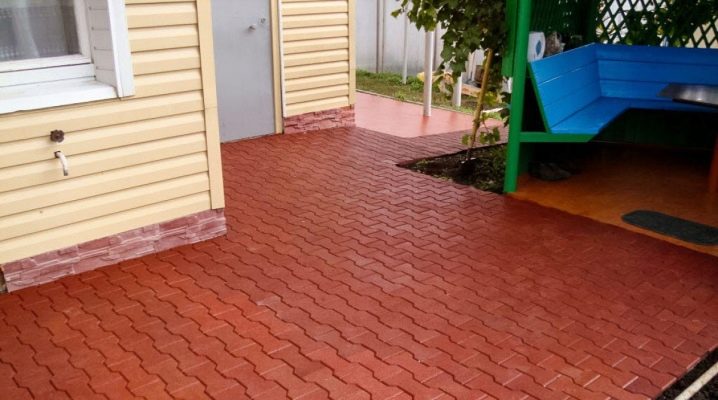
The first thing that the owners of country houses think about after the completion of their construction is the improvement of the local space. For many years this has been done with plain gravel and concrete, but in recent years they have been almost completely replaced by paving stones.
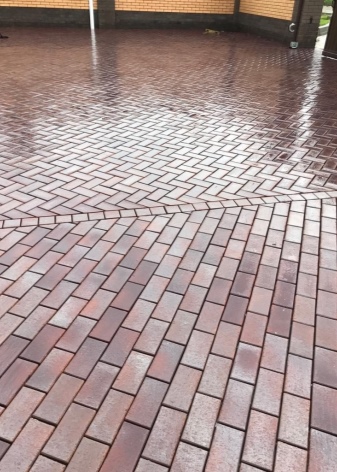
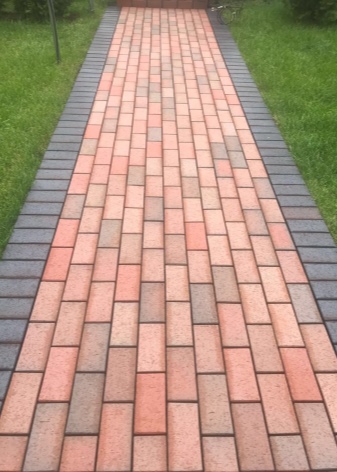
What it is?
Paving stones are natural or artificial stones of a small size, from which road surfaces are formed. Such stones are of the same size and shape and are stacked in ordered rows on a sandy substrate, forming a pavement. In addition to the fact that the paving stone looks very neat and aesthetically pleasing, such a coating has a number of other advantages.
- High strength and durability. In many large cities, old paving stones, laid on the roads before the beginning of the 20th century, were not dismantled, but served as a reliable basis for modern concrete pavements.
- Crack resistance. The canvas is heterogeneous, consists of many individual elements, on average from 30 to 80 pieces per 1 sq. square meter. Therefore, the risk of cracks in such a sidewalk is minimal. But even if suddenly one or more bricks are cracked from mechanical stress, they can be easily removed and replaced with whole ones at any time.
- Laying speed. When paving paths with paving stones, there is no need to wait for the gluing and drying of the elements, and therefore the work is carried out in a matter of hours. Additionally, it is worth noting that such surfaces can be exploited immediately after the end of the work.
- The paving stones removed from the old path can be reused. Besides, natural stone paving stones are much more environmentally friendly than asphalt.

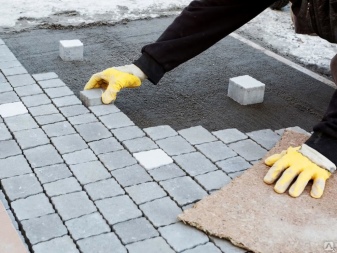
The only drawback of paving stones is its high price, as well as the high cost of laying work. On average, the price for laying 1 m2 of paving stones is from 500 to 2000 rubles. depending on the complexity of the pattern. And the cost of the tiles themselves can reach 3000-4000 rubles / m2.
What is different from paving slabs?
The main difference between paving stones and ordinary paving slabs is its thickness (from 50 to 120 mm with a step of 20 mm). Due to this, the cost of paving stones is higher. But even outwardly, it looks more attractive, and besides, it can withstand a lot of stress. There is also a significant price difference between paving stones and tiles.
If the budget is limited, it is better to lay walkways with regular tiles, and choose inexpensive paving stones for the driveway.


Views
There are several types of stone tiles for paving paths in the country or in a suburban area. They differ from each other primarily in the way they are produced. In total, there are three main methods for making artificial paving stones.
-
Hyper pressing - the creation of bricks by semi-dry pressing. The material is very dense and strong by minimizing moisture levels. In this way, you can get the thinnest paving stones 200x100x40 mm.
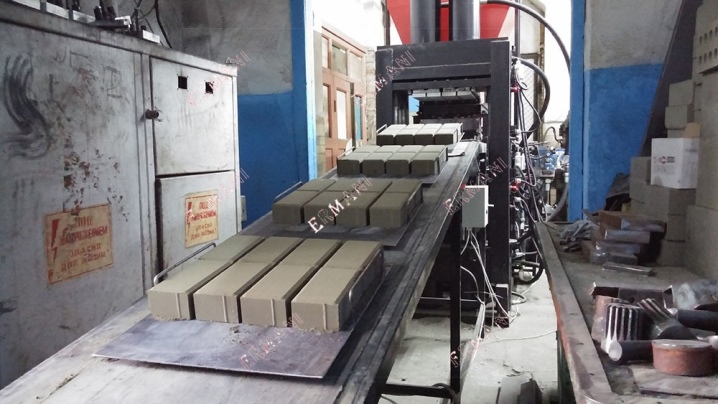
- Vibration casting - creation of tiles from a liquid mixture using a vibrating platform, which compresses the raw material and turns it into a dense bar.
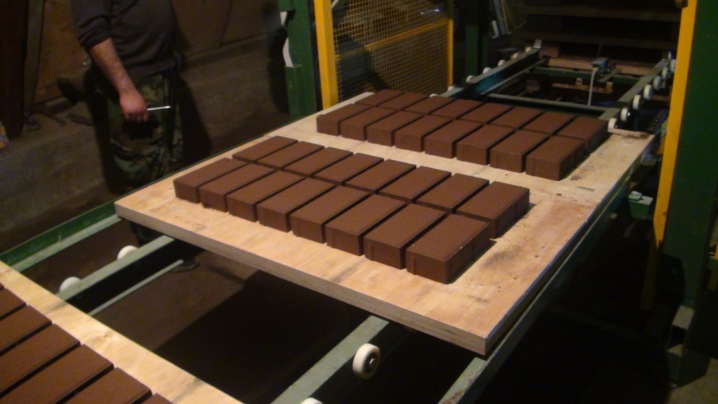
- Vibrocompression - this is the creation of paving stones from wet crumbly raw materials using a special press, and then it is transmitted to vibration in order to make the material as dense as possible.

Natural stone paving stones are also divided into several types, depending on the method of production.
-
Sawn tiles is obtained by sawing a large stone into small identical bricks. Such bricks turn out to be smooth and smooth, but rather slippery, which can create certain risks. To make the surface of the sawn paving stone not so dangerous, it is tumbling, that is, it is placed in a special drum with a fine filler, which scratches the surface of the paving stone. The result is a tumbling tile with a rough surface.

-
Chipped is obtained by splitting one large stone into several smaller pieces. It is uneven and can vary in size, but the paths paved with such a stone look the most natural.

- Stab-sawn is obtained by combining two processes. The tiles come out smooth on the back and uneven on the front.

Shapes and sizes
The dimensions of natural stone depend on the method of its production. So, chipped and chipped-sawn stones, on average, have the smallest size from 50x50x50 mm. And sawn tiles are usually produced in two standard sizes: 200x100x60 and 200x100x50 mm.
The standard shape and size of artificial paving stones according to GOST is an ordinary rectangular brick 100x200x60 mm, weighing from 2 to 5 kg, depending on the material of manufacture. However, other forms of paving stones can be found on sale:
-
square;
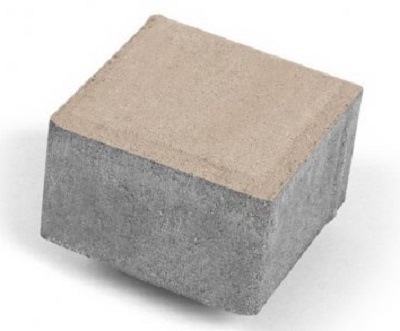
-
hex and pentahedron;
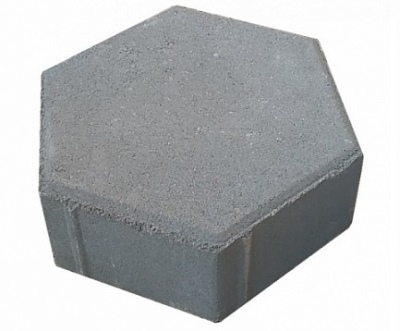
-
wave;

-
coil;
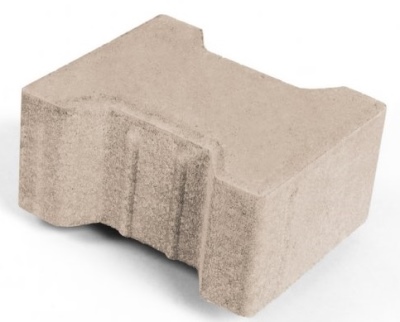
-
rhombus;
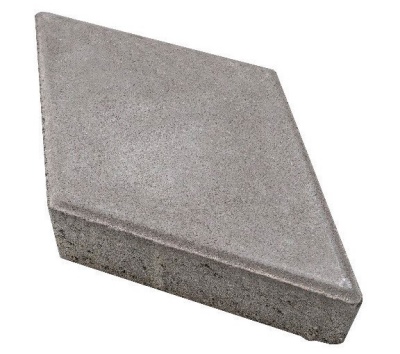
-
Clover;

-
round;
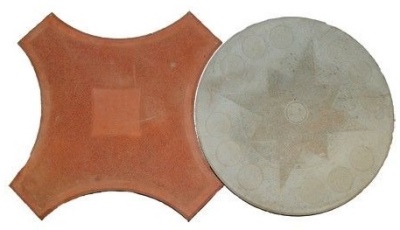
-
chamomile;
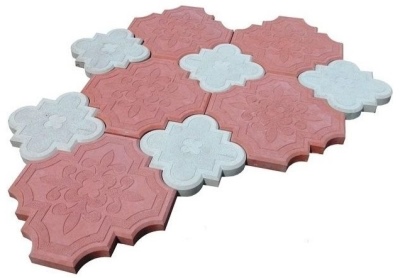
-
eco;

- curly.
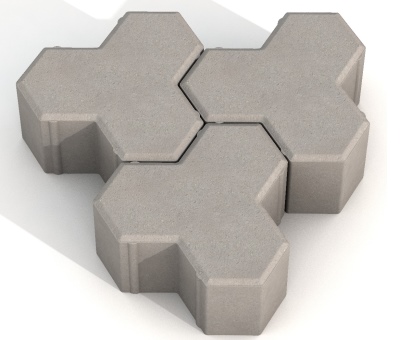
Custom-made curly options can be in the form of various abstract shapes, for example, stars or hearts, in the form of plants, animals, and even recognizable characters or brands.
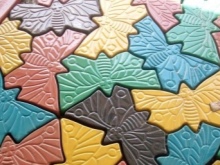
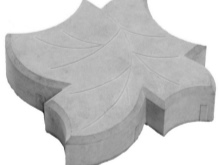

Marking
Package marking should contain information about the group of paving stones, their shape and size. The group is the class of use of the tile, which depends on its operational loads.
- Group 1 (A) - paving stones for pedestrian roads, adjoining territory and park paths, which are not accessible for cars.
- Group 2 (B) - for streets and small areas with the arrival of cars and public transport.
- Group 3 (B) - for low-traffic roads, parking lots and areas of gas stations.
- Group 4 (D) - for high traffic areas (airports, docks).
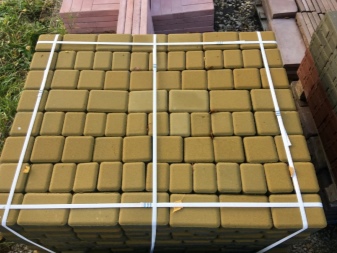

According to the shape, manufacturers mark the tiles using the letter designation:
- P - classic rectangular shape;
- K - tiles in the form of squares;
- Ш - hexagonal, honeycomb-like;
- D - additional for bordering corner options;
- F - curly;
- EDD - elements of road decor.
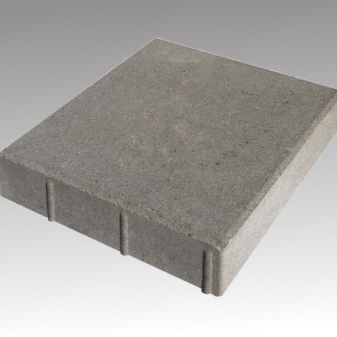
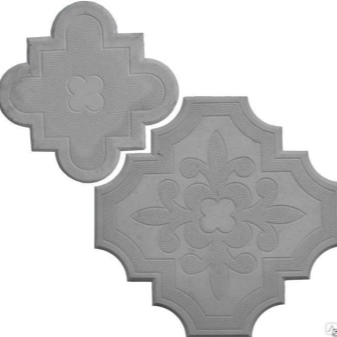
So, if the package says 2K-6, it means that it contains a square paving stone of the second group with a thickness of 60 mm.
Materials (edit)
Another way to classify paving stones is by composition and material.
Concrete
Robust paving stones are made from heavy or fine concrete. The composition of such a mixture includes high-quality Portland cement, water, fine sand, crushed stone and various additives in the form of sealing or coloring substances. Reinforced views may additionally contain fiberglass or basalt reinforcement. Most often, such tiles are used for laying in public spaces and have the usual shape and color of gray bricks.
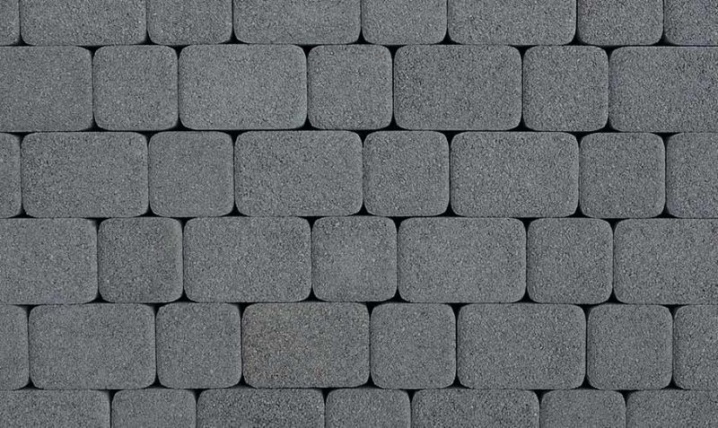
Clinker
Bricks made of sandstone, clay and lime, which are fired for a long time in kilns at a critically high temperature. Due to this, they are very dense and durable. The only disadvantage of such paving stones is that the cost is twice as much as ordinary concrete.
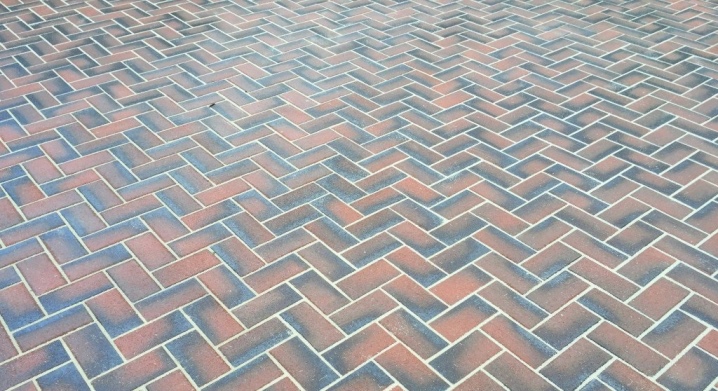
Rubber-based
Such paving stones are made on a soft rubber backing, for the production of which fine rubber crumb and polyurethane glue are mixed. Its distinctive feature is a low probability of injury for a falling person due to its high shock-absorbing qualities.
In addition, it has greater moisture and frost resistance compared to concrete.
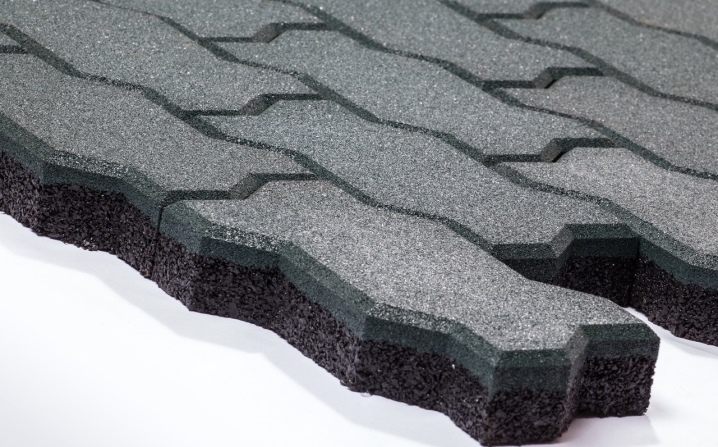
Polymer sand
As the name implies, such paving stones are made from a mixture of sand and synthetic polymer materials, for example, polyethylene, using vibration casting technology. Due to the fact that polymers practically do not decompose in natural conditions, such tiles will last for decades. And the ease of adding dyes at the production stage allows you to create finished products of various colors.
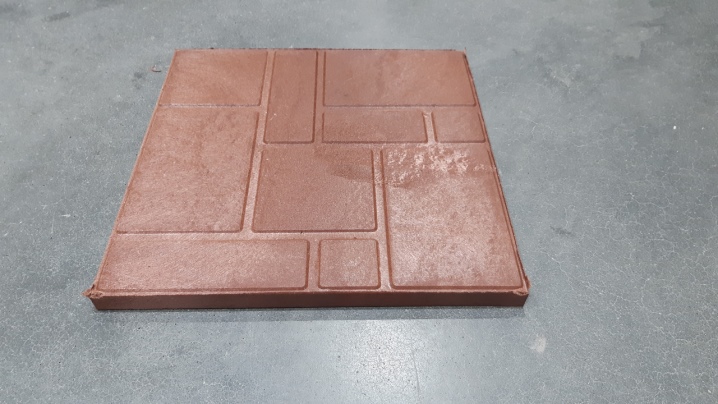
From granite
The most expensive, but at the same time environmentally friendly and strong paving stones are made from natural stone. It can be not only granite, but also marble or a very hard stone called gabbro-diabase. Such paving stones are not afraid of rain, frost and heavy loads. Marble or granite chipped tiles look especially beautiful. It differs from simple chipped tiles in that it does not undergo decorative processing at all, retaining all its natural chips and defects.
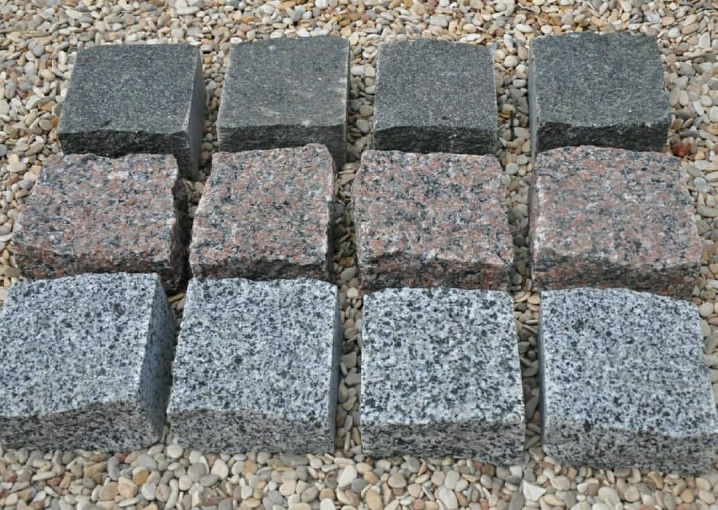
Wooden
The most unusual and rare material for the manufacture of paving stones, which can be found in only a couple of manufacturers in the world market, is wood. Cubes of oak or Siberian larch treated with special strengthening compounds are very expensive and will last only a couple of decades, but they look very unusual.
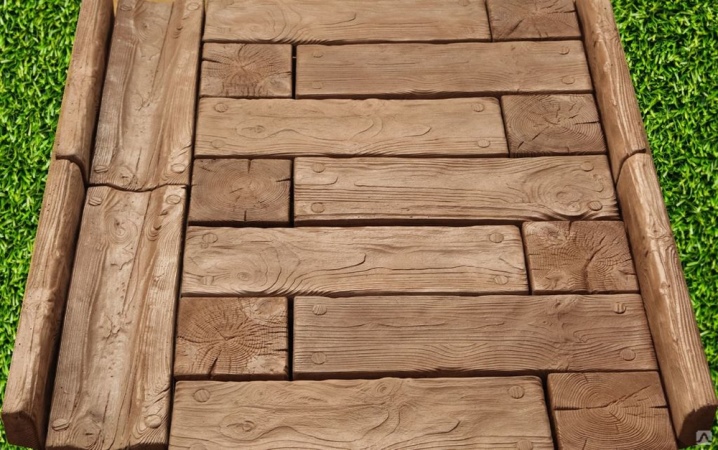
Design
With the help of the right shade and texture of paving stones, you can completely transform even the simplest paths and grounds of a private house or park. The standard tile colors are gray and black. However, it is also common to find white, red, yellow and brown tiles on sale.
Rarer colors such as blue, pink, or green can be hunted for. But in recent years, an increasing number of manufacturers are ready to offer various colors and even patterns of paving stones, created individually for each specific buyer. Designers are ready to design entire mosaics and even pictures made on the sidewalk for the client.
You can also find many different options for texture:
-
classic smooth or rough paving stones;
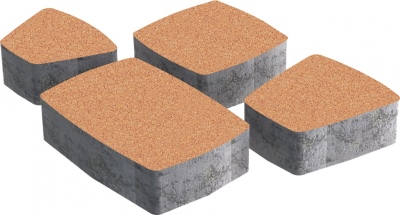
-
cloud - a soft winding pattern with a matte effect;
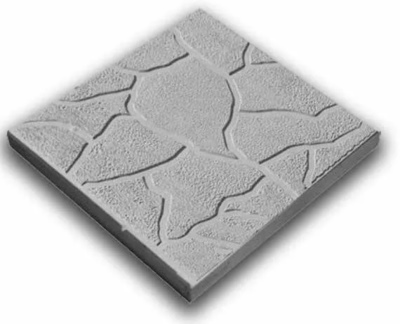
-
fine and coarse mesh that looks like a tile in the bathroom;
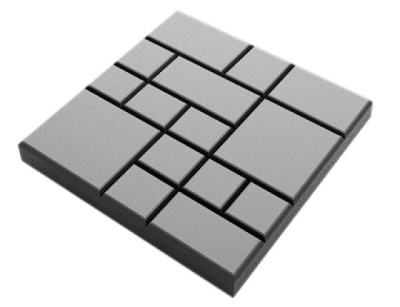
-
a plank resembling natural wood;
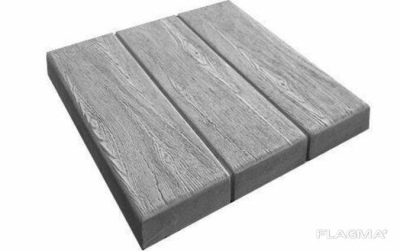
-
texture imitating small pebbles or gravel;
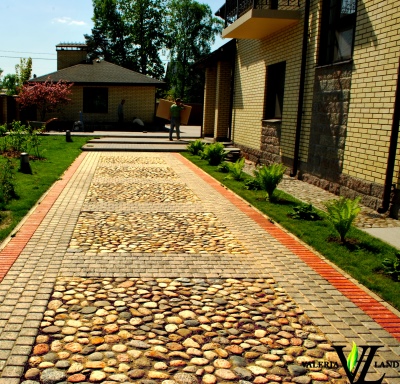
- checkers and carpet.
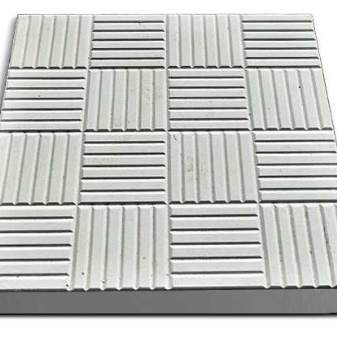
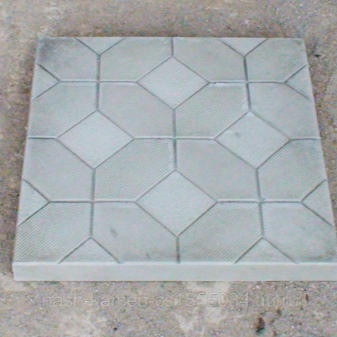
Not so long ago, an unusual luminescent paving stone from luminoconcrete appeared on sale.
Like phosphoric figures, it charges in daylight, and after dark it begins to glow softly with a yellow-greenish color.
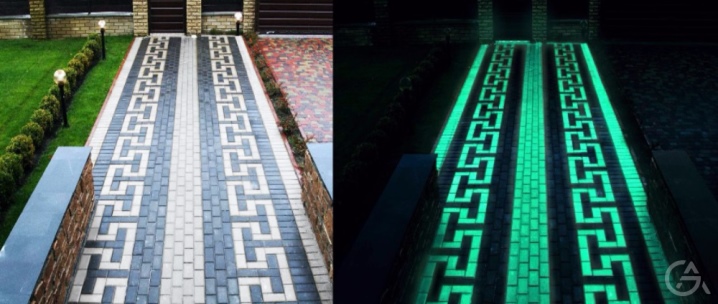
Laying schemes
Even from the simplest rectangular tiles of the same color, you can lay out a complex beautiful pattern if you arrange it according to the correct pattern. There are several classic options for laying out paving stones.
-
Rectangle - the simplest "brick" masonry that even a beginner can handle.
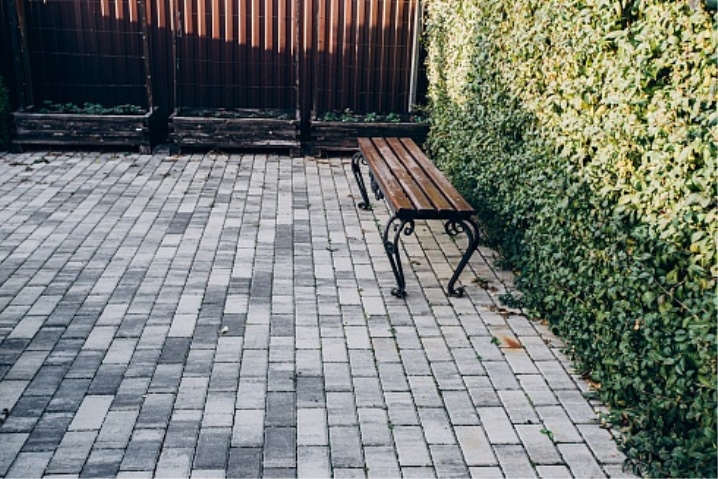
-
Chess - one of the most popular schemes for laying paving slabs in two colors, most often black and white.
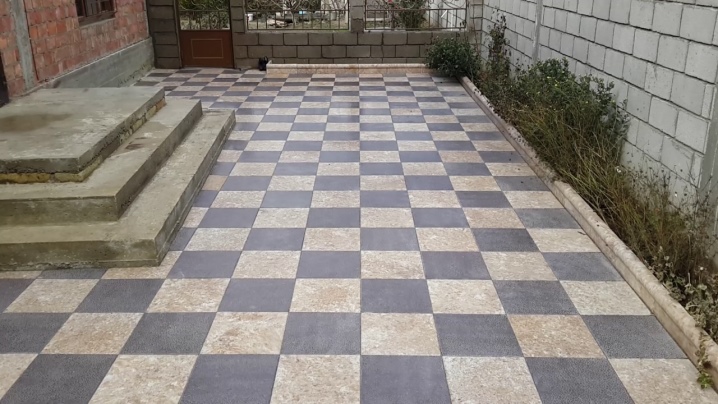
-
Herringbone. With this scheme, two tiles are stacked so that they form an arrow.
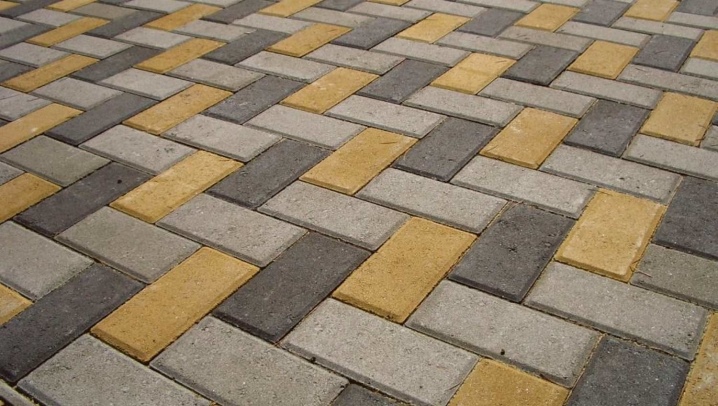
-
Ladder. Scheme for two or three colors of tiles laid in the form of oblique ladders.
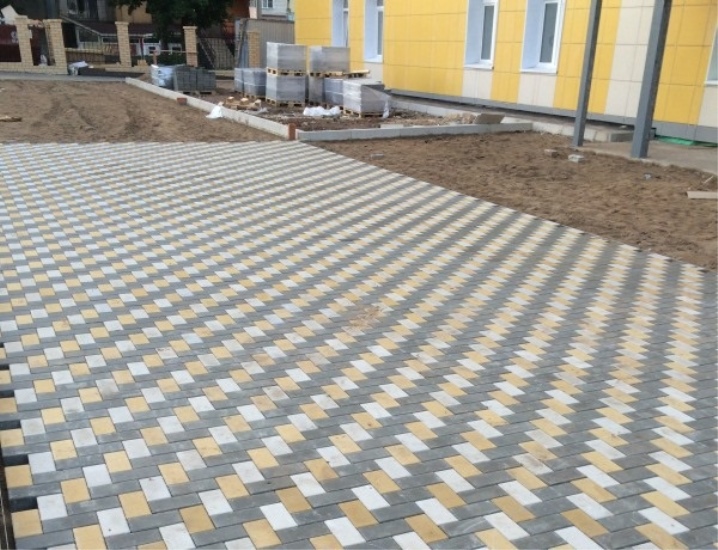
-
Circular diagram. Paving stones are often laid on paving sites with circular paving.
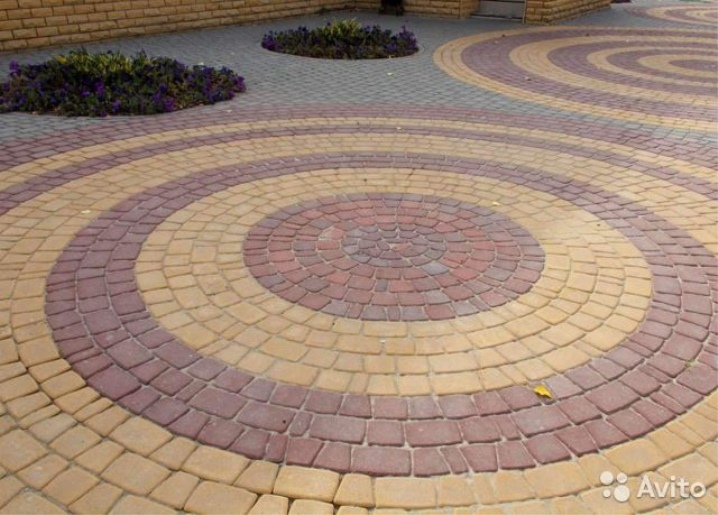
-
Spiral. Great for narrow paths and sidewalks. It resembles brickwork, but due to the two colors it looks much more complicated.
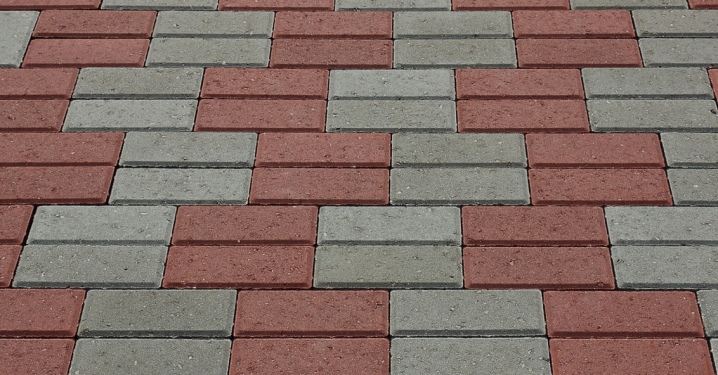
-
Network - a more complex scheme of rectangular paving stones, located perpendicular to one another.
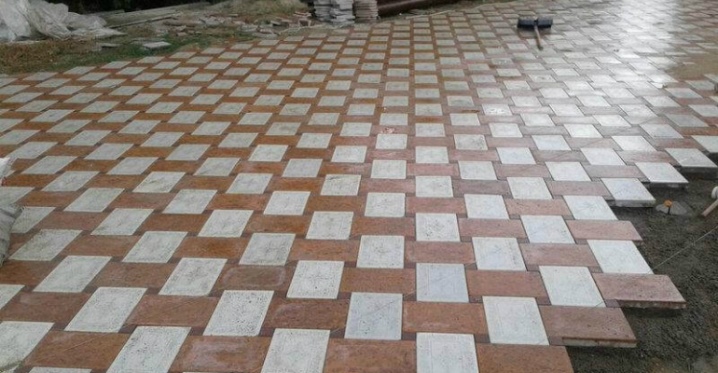
- Chaotic order looks especially good when using 3 or more colors. An excellent economical option: buy the remains of paving stones of different colors with a big discount.
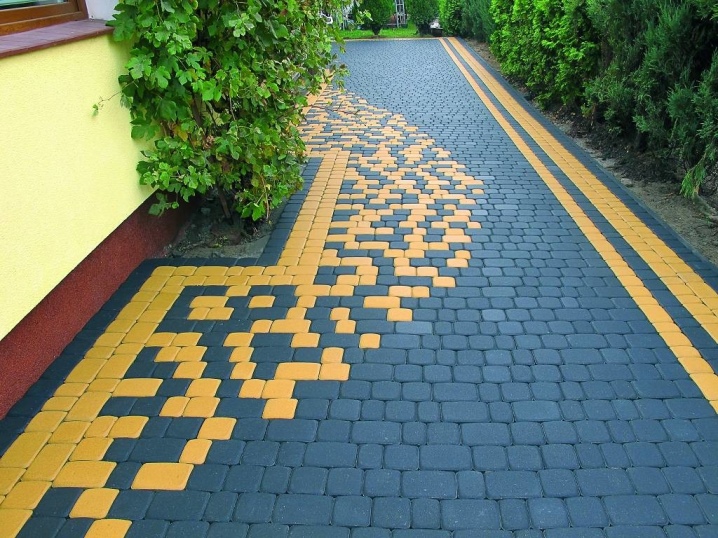
In addition to standard schemes, there are also complex individual schemes that are developed by professionals or come up with the owners of the site themselves. Such paving stones look very original and stylish.
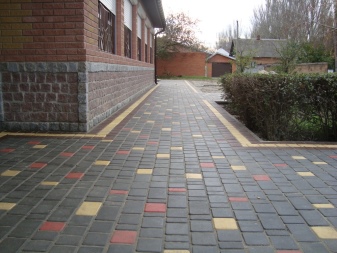

Applications
The high quality of the paving stones and their durability allow them to be used for laying in a wide variety of places. However, most often it can be found in pedestrian areas and in private suburban areas. With its help, various paths and driveways on the streets are drawn up, small areas and entrances to the garage or house are paved. In some cases, even special parking lots for cars are covered with paving and road paving stones.
Artificial or natural paving stones can be used to cover the foundation and basement of the building in order to increase their frost and moisture resistance. And also to pave the covered courtyard with such tiles, the floor of the gazebo in the garden and even the low steps of the porch.
Landscape designers also like to use decorative sidewalk stone to beautifully decorate parks, recreation areas and even tourist centers.
The variety of shapes, colors and sizes allows you to create unique compositions that can satisfy even the most demanding customer.
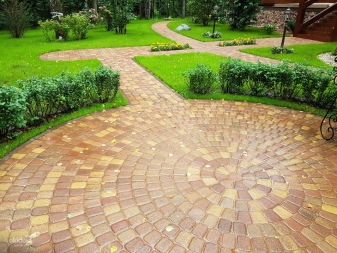
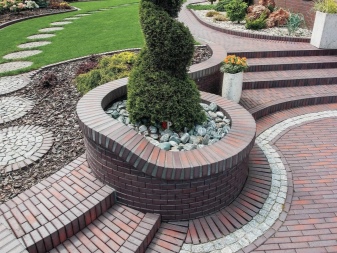
How to choose?
Before you go shopping in a store, you need to decide on the purpose of the paving stones. What loads will she have to withstand: only pedestrians or the weight of multi-ton trucks. After making a choice, attention should be focused on the following points.
- Material. Concrete, clinker or polymers - only the buyer himself decides.
- Water resistance. If a pool is planned on the site, the tiles around it should be the most moisture resistant. And also this parameter should be paid close attention to residents of the northern regions and the middle lane.
- The form. If you plan to lay paving stones with your own hands, you should opt for simpler forms.
- Colour. For a full-fledged composition underfoot, tiles of three colors are enough. Colors that are too bright often signal low quality, so it's better to focus on more natural, muted tones. In addition, the paving of paths should not be brighter than the painting of the house itself, and draw too much attention to itself.
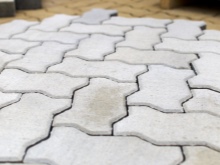
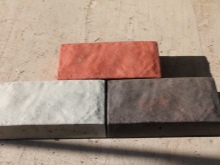
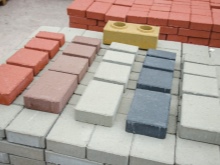
It is best to look at the paving stones with your own eyes before buying, and not through the computer monitor, to touch it. When shopping online, you may be asked to send small samples first.
A little trick from professional builders: before buying, you can take two paving stones and knock them against each other. The louder and louder the resulting sound, the better the paving stones are dried, which means that its quality and service life are higher.
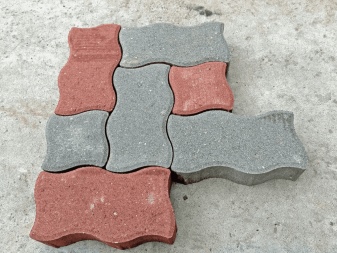
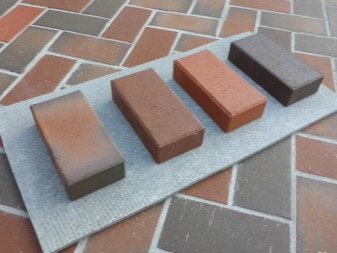













The comment was sent successfully.